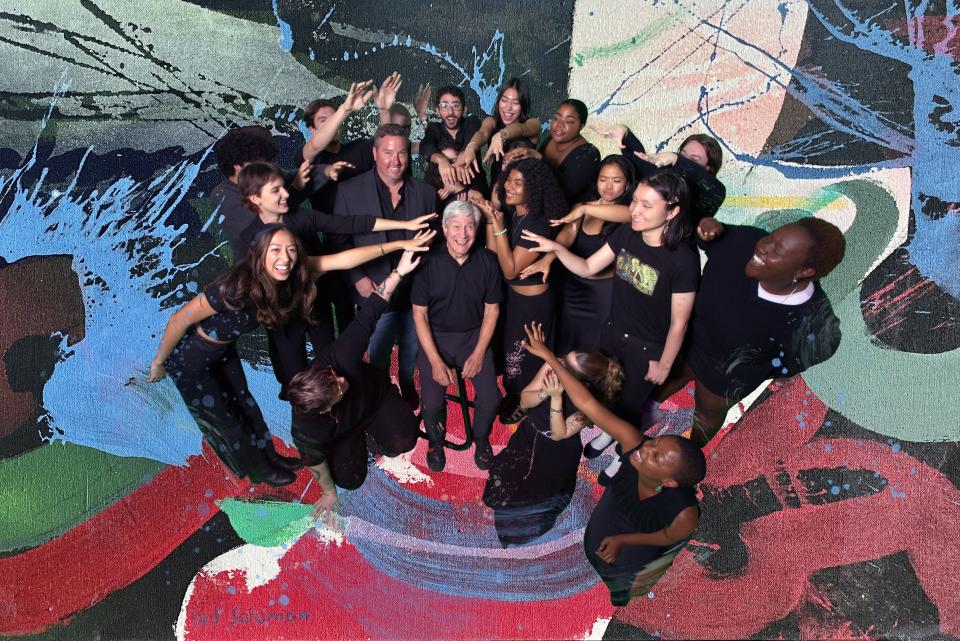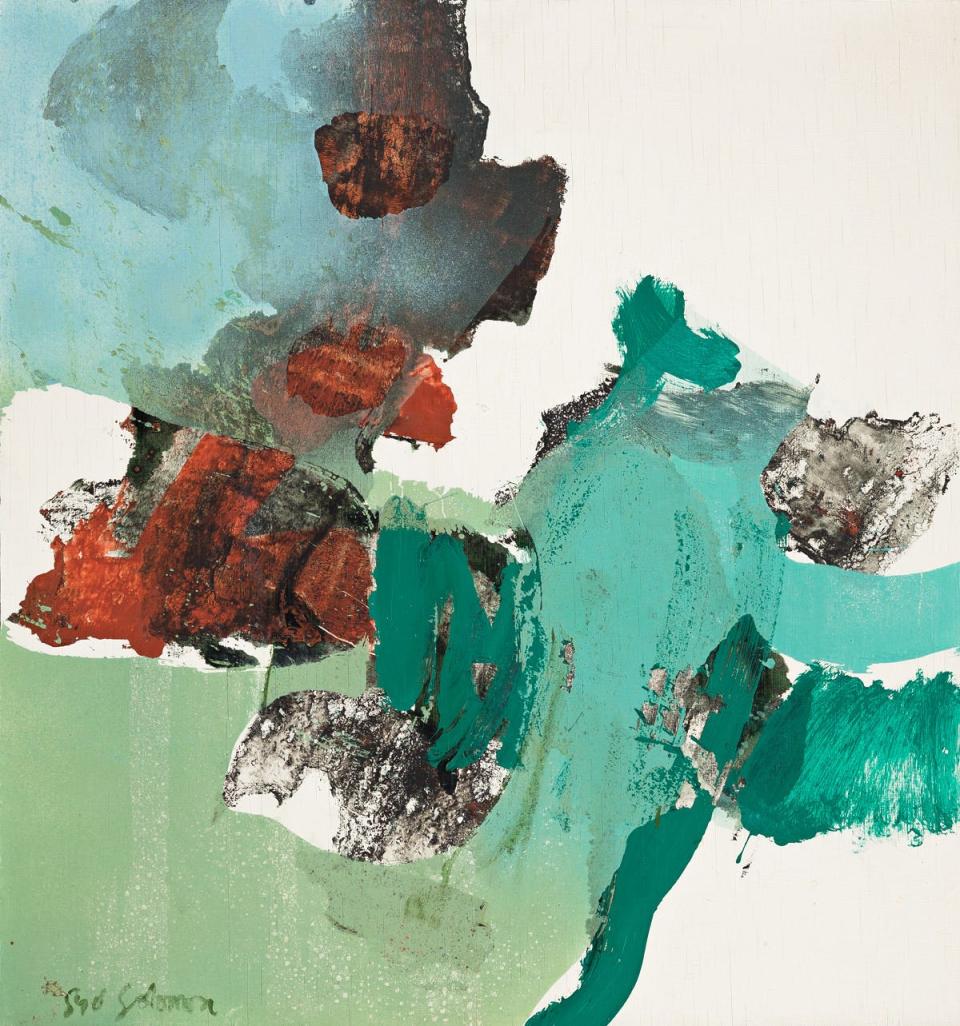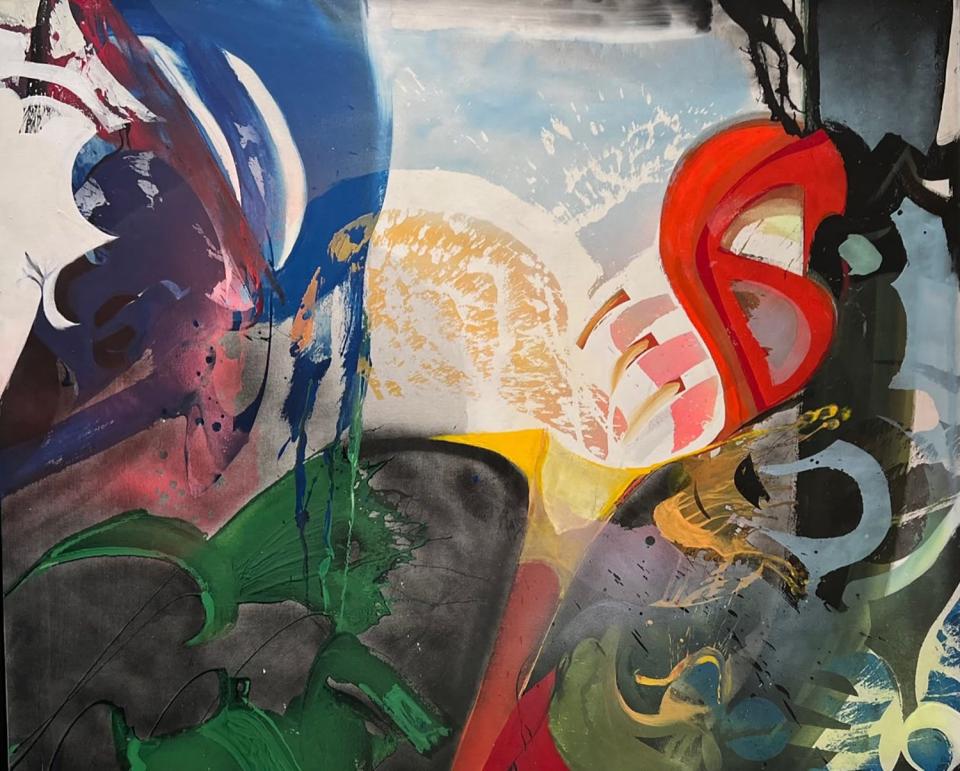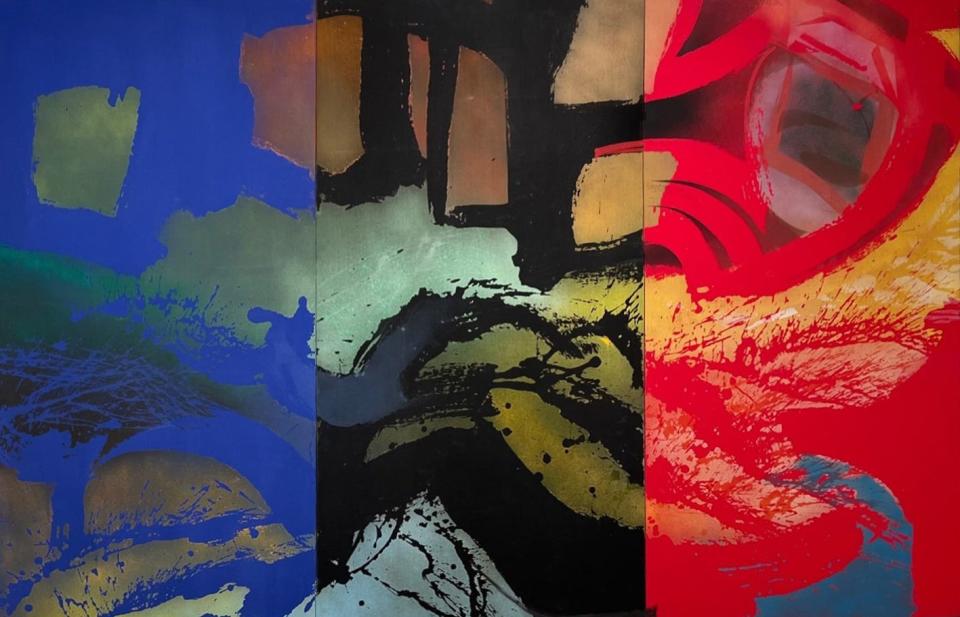Ringling College exhibit reveals Syd Solomon’s Oceans of the Mind
In 1927, the poet Romain Rolland wrote about the "oceanic feeling" in a letter to Sigmund Freud. He described it as, "a sensation of eternity… a feeling of being one with the external world as a whole.” Freud quoted the poet in “Civilization and its Discontents.” Syd Solomon might not have read Freud’s book. But he definitely knew the feeling.
Solomon was part artist, part mystic. His topographic oceans have the tidal pull of eternity. While his abstract paintings evoke the life aquatic, they’re not literal seascapes. You won’t find Solomon’s seas in The National Geographic. They’re the oceans of the mind. Informed by the artist’s dives in terrestrial oceans and his stint as a military camouflage artist in World War II. But they’re not of this world.
Solomon was, of course. In the post-war boom years, he made the most of his remaining time on this planet. Solomon divided his time between homes in Sarasota and East Hampton, New York. Wherever he was, he created art. Great paintings. That didn’t look like anybody else’s paintings.

Lazy art critics filed Solomon under “Abstract expressionist.” That label fit him like a baggy suit. (“Abstract impressionist” was what he called himself.) Solomon was sui generis. His paintings expressed what words couldn’t. That’s pretty much all he had in common with Jackson Pollock and the rest.
Solomon had a lot to say in his paintings. Which explains why he painted 5,000 or so. (That’s his son Michael Solomon’s best estimate.) Richard and Pamela Mones collected 44 of those paintings. 18 are featured in “Syd Solomon: Fluid Impressions,” Ringling College’s latest exhibition. For fans of Solomon’s art, it’s a very deep dive. But the depths of his art are far from placid.
Solomon’s paintings pack a punch. This exhibit doesn’t try to soften the blow. The art’s in your face, the second you walk inside. Pow! Big paintings; bold paintings; tsunamis of color. It is what it is. Love it or leave it. Look or look away.
I didn’t look away. Here’s some of what I saw.

“Coast Call” (1967) is one of Solomon’s earlier works. The oil-on-wood panel painting is a collision of jagged green and brown crescents against a field of white. The image evokes the fractal edges of a coastline, from the point of view of aerial photography. Most of Solomon’s military camouflage thwarted death from above; he’s clearly drawing on that experience.
“Trishades” (1982) is one of Solomon’s rare triptychs. It’s comprised of three oil-and-acrylic paintings: one blue, one black, one red. Three vertical elements. But the eye fuses them together. You see the triptych as a single painting: a horizontal whole. Tendrils of organic shapes like psychedelic seaweed flow from left to right across the color fields. But there’s a countercurrent pushing back. The blood-red panel at the far right is marked with unnatural geometry. Sharp crescents cut to the left like sharp scythes. Man-made and deadly. (As I read the painting, not enough to kill nature’s flow. At least now yet.)

“Coast Event” (1988-89) is far more fluid. This oil-and-acrylic painting has no sharply defined boundaries — and no sense of struggle. The painting’s energy flows from the ground up. A fluted form rises up in the center. A flower, waterspout, whatever you want it to be. This mysterious organic form blooms in hot colors of red and yellow. It’s also brightly lit. The background on either side is muted and dark. But it’s not at war with nature’s beauty.
My three examples of Solomon’s art are in chronological order. But don’t get the wrong idea.
This exhibition is unstuck in time. It’s a retrospective. But it doesn’t lead you by the hand from year to year. (In 1967 Solomon learned this. In 1981, he experimented with that.) “Fluid Impressions” flows outside that formula. The timeline’s not the point here. It’s all about the mind behind the painted oceans. And the drama Solomon created in his floating worlds.
Arts Newsletter: Sign up to receive the latest news on the Sarasota area arts scene every Monday
Artist Michele Oka Doner: Ringling exhibit reveals the beauty and terror of nature

It’s an excellent show. I assumed Tim Jaeger curated it. I discovered that five students under his supervision did the work. Curating this show was their assignment in one of Jaeger’s courses: “The Role of the Curator.” But it wasn’t that course’s only assignment. Other students learned about lighting, marketing, and other curatorial specialties. These five got practical experience putting together a high-end art exhibition. Whatever the focus, the course’s students all learned by doing.
That was Thomas Dewey’s progressive idea back in 1899. In the years that followed, many American schools defaulted to an assembly line, rote-learning approach. But Ringling College was always an exception. Their curriculum still took a learn-by-doing approach in the 1980s. It impressed me at the time. They never changed their ways. Dewey’s progressive philosophy still lives at that college — and in this exhibit. And I’m still impressed.
Solomon’s otherworldly paintings impress the hell out of me, too.
‘Syd Solomon: Fluid Impressions’
Through March 25 at the Lois and David Stulberg Gallery at Ringling College. 2700 N. Tamiami Trail, Sarasota; (941) 359-7563; ringling.edu/galleries
This article originally appeared on Sarasota Herald-Tribune: Sarasota artist Syd Solomon seen through new lens at Ringling College
